
How to Use ESP32-WROOM-32: Examples, Pinouts, and Specs
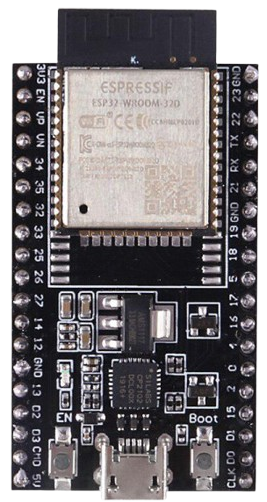
 Design with ESP32-WROOM-32 in Cirkit Designer
Design with ESP32-WROOM-32 in Cirkit DesignerIntroduction
The ESP32-WROOM-32 is a powerful Wi-Fi and Bluetooth microcontroller module designed for IoT applications and embedded systems. It features dual-core processing capabilities, making it suitable for tasks requiring high performance and efficiency. With integrated Wi-Fi and Bluetooth (Classic and BLE), the ESP32-WROOM-32 is widely used in smart home devices, wearables, industrial automation, and other connected applications.
Explore Projects Built with ESP32-WROOM-32
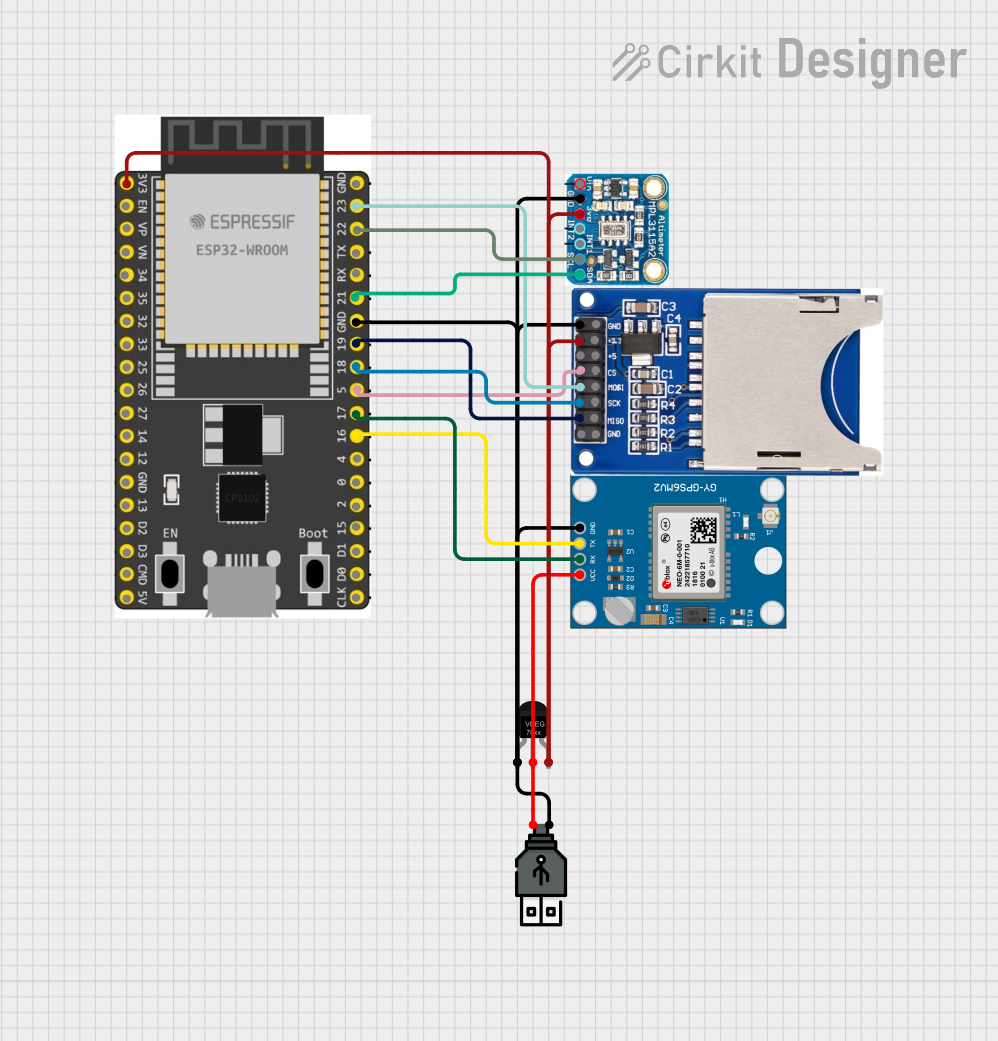
 Open Project in Cirkit Designer
Open Project in Cirkit Designer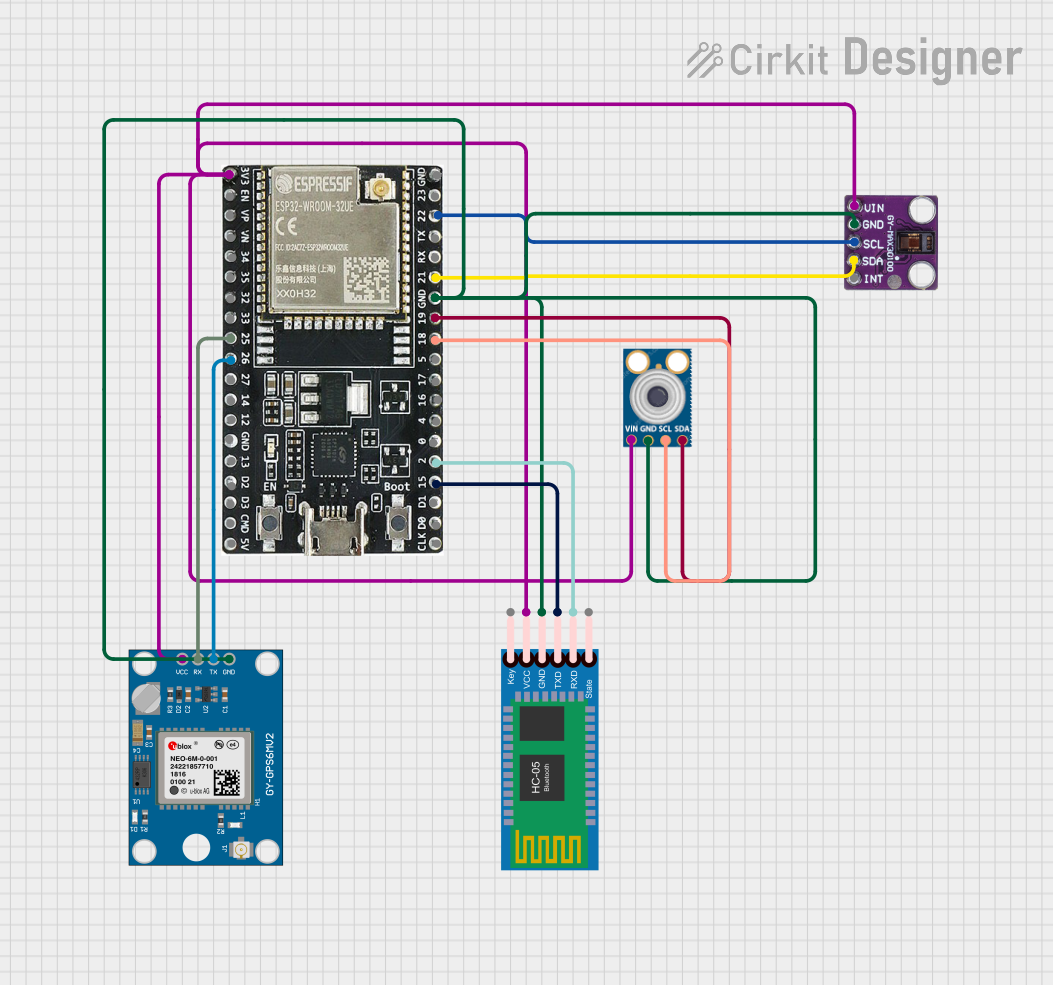
 Open Project in Cirkit Designer
Open Project in Cirkit Designer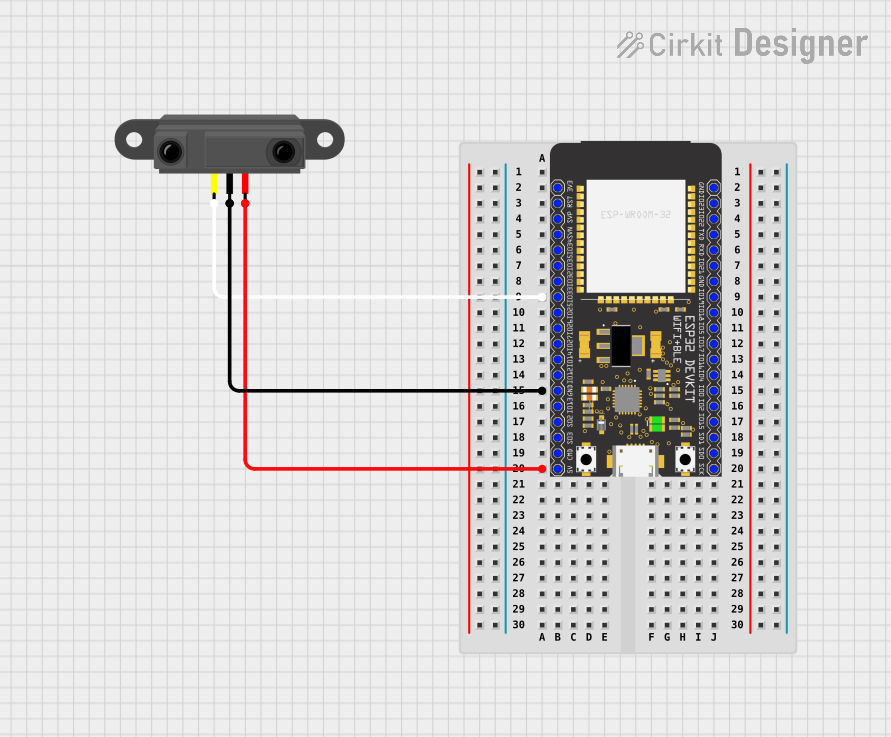
 Open Project in Cirkit Designer
Open Project in Cirkit Designer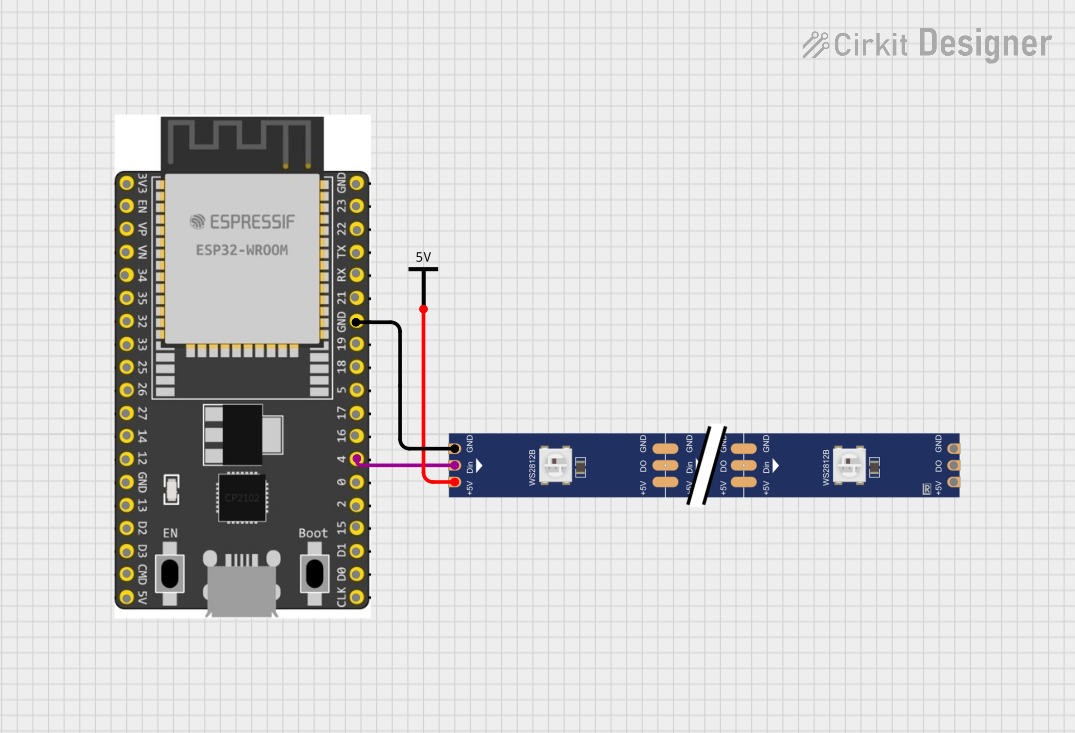
 Open Project in Cirkit Designer
Open Project in Cirkit DesignerExplore Projects Built with ESP32-WROOM-32

 Open Project in Cirkit Designer
Open Project in Cirkit Designer
 Open Project in Cirkit Designer
Open Project in Cirkit Designer
 Open Project in Cirkit Designer
Open Project in Cirkit Designer
 Open Project in Cirkit Designer
Open Project in Cirkit DesignerCommon Applications and Use Cases
- Smart home devices (e.g., smart lights, thermostats)
- IoT sensors and gateways
- Wearable devices
- Industrial automation and control systems
- Wireless data logging and monitoring
- Robotics and drones
Technical Specifications
The ESP32-WROOM-32 module is based on the ESP32-D0WDQ6 chip and includes a variety of features to support complex applications.
Key Technical Details
- Processor: Dual-core Xtensa® 32-bit LX6 microprocessor
- Clock Speed: Up to 240 MHz
- Flash Memory: 4 MB (external SPI flash)
- SRAM: 520 KB
- Wi-Fi: 802.11 b/g/n (2.4 GHz)
- Bluetooth: v4.2 BR/EDR and BLE
- Operating Voltage: 3.0V to 3.6V
- GPIO Pins: 34 (multipurpose, including ADC, DAC, PWM, I2C, SPI, UART)
- ADC Channels: 18 (12-bit resolution)
- DAC Channels: 2 (8-bit resolution)
- Power Consumption: Ultra-low power modes available
- Operating Temperature: -40°C to +85°C
Pin Configuration and Descriptions
The ESP32-WROOM-32 module has 38 pins. Below is a table of the most commonly used pins and their functions:
| Pin | Name | Function |
|---|---|---|
| 1 | EN | Enable pin. Pull high to enable the module. |
| 2 | GPIO0 | General-purpose I/O, boot mode selection during startup. |
| 3 | GPIO2 | General-purpose I/O, often used for bootstrapping. |
| 4 | GPIO12 | General-purpose I/O, ADC2 channel. |
| 5 | GPIO13 | General-purpose I/O, ADC2 channel, touch sensor. |
| 6 | GPIO14 | General-purpose I/O, ADC2 channel, touch sensor. |
| 7 | GPIO15 | General-purpose I/O, ADC2 channel, touch sensor. |
| 8 | GPIO16 | General-purpose I/O, used for UART RX. |
| 9 | GPIO17 | General-purpose I/O, used for UART TX. |
| 10 | 3V3 | 3.3V power supply input. |
| 11 | GND | Ground. |
| 12 | TX0 | UART0 transmit pin. |
| 13 | RX0 | UART0 receive pin. |
| 14 | ADC1_CH0 | Analog input channel 0. |
| 15 | DAC1 | Digital-to-analog converter output 1. |
For a complete pinout, refer to the ESP32-WROOM-32 datasheet.
Usage Instructions
How to Use the ESP32-WROOM-32 in a Circuit
- Power Supply: Provide a stable 3.3V power supply to the 3V3 pin. Ensure the current supply is sufficient for Wi-Fi and Bluetooth operations (at least 500 mA).
- Boot Mode: Connect GPIO0 to GND during power-up to enter bootloader mode for programming.
- UART Communication: Use the TX0 and RX0 pins for serial communication with a computer or microcontroller.
- GPIO Usage: Configure GPIO pins as input or output in your code. Many GPIOs support additional functions like ADC, PWM, or I2C.
- Antenna: Ensure the onboard antenna has a clear path for optimal Wi-Fi and Bluetooth performance.
Important Considerations and Best Practices
- Use a level shifter if interfacing with 5V logic devices, as the ESP32 operates at 3.3V logic levels.
- Avoid using GPIO6 to GPIO11, as these are connected to the internal flash memory.
- Decouple the power supply with capacitors (e.g., 10 µF and 0.1 µF) to reduce noise.
- Use proper grounding techniques to minimize interference in high-frequency applications.
Example: Connecting to an Arduino UNO
The ESP32-WROOM-32 can be programmed directly or used as a peripheral with an Arduino UNO. Below is an example of using the ESP32 to blink an LED:
Code Example
// Example: Blink an LED using ESP32-WROOM-32
// Connect an LED to GPIO2 with a 220-ohm resistor.
#define LED_PIN 2 // GPIO2 is connected to the LED
void setup() {
pinMode(LED_PIN, OUTPUT); // Set GPIO2 as an output pin
}
void loop() {
digitalWrite(LED_PIN, HIGH); // Turn the LED on
delay(1000); // Wait for 1 second
digitalWrite(LED_PIN, LOW); // Turn the LED off
delay(1000); // Wait for 1 second
}
Troubleshooting and FAQs
Common Issues and Solutions
Module Not Responding
- Cause: Incorrect power supply or wiring.
- Solution: Ensure the module is powered with 3.3V and all connections are secure.
Cannot Upload Code
- Cause: GPIO0 is not pulled low during boot.
- Solution: Hold GPIO0 low while resetting the module to enter bootloader mode.
Wi-Fi Connection Fails
- Cause: Incorrect SSID or password.
- Solution: Double-check the Wi-Fi credentials in your code.
Bluetooth Not Discoverable
- Cause: Bluetooth not initialized in the code.
- Solution: Ensure the Bluetooth stack is properly configured in your program.
FAQs
Q: Can the ESP32-WROOM-32 operate on 5V?
A: No, the module operates at 3.3V. Use a voltage regulator or level shifter for 5V systems.Q: How do I reset the module?
A: Press the EN (enable) pin or connect it to GND momentarily to reset the module.Q: Can I use the ESP32-WROOM-32 for battery-powered applications?
A: Yes, the module supports ultra-low power modes, making it suitable for battery-powered devices.Q: What is the maximum range of Wi-Fi?
A: The range depends on the environment but typically reaches up to 100 meters in open space.
This documentation provides a comprehensive guide to using the ESP32-WROOM-32 module effectively. For more advanced features, refer to the official ESP32 technical reference manual.